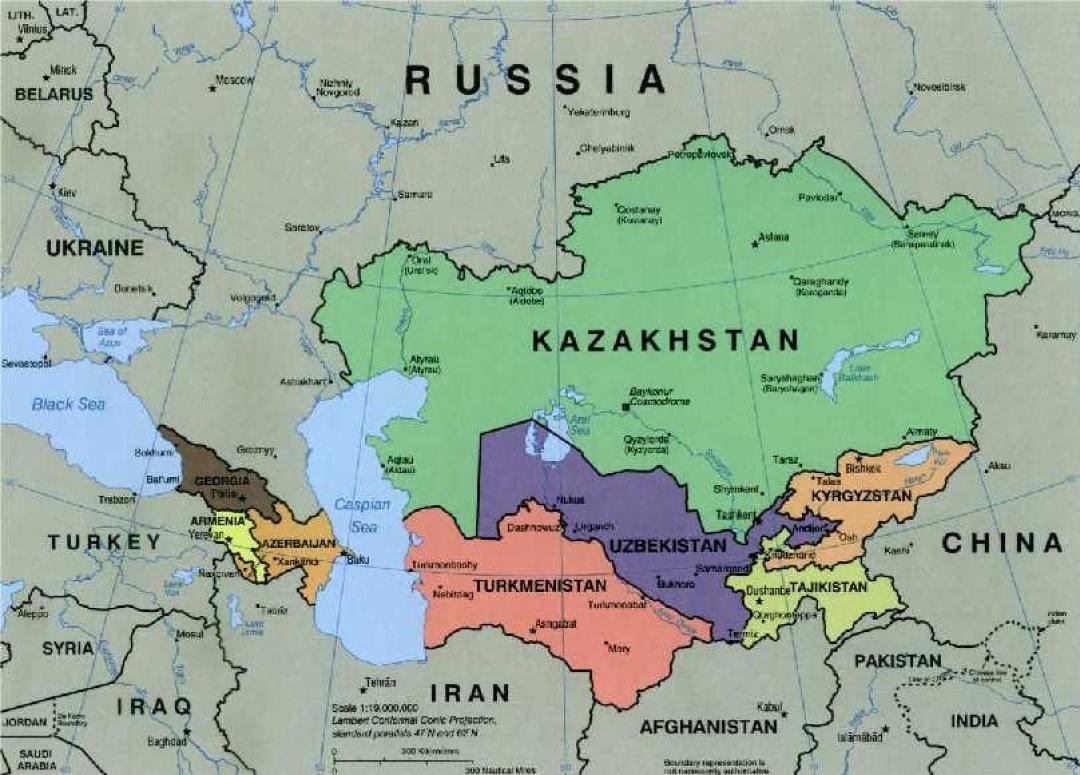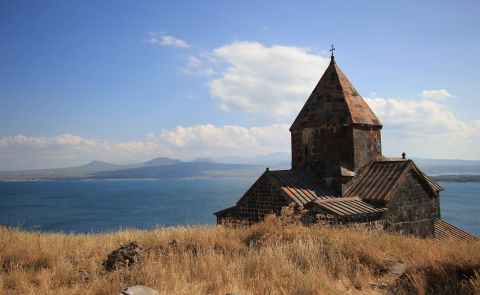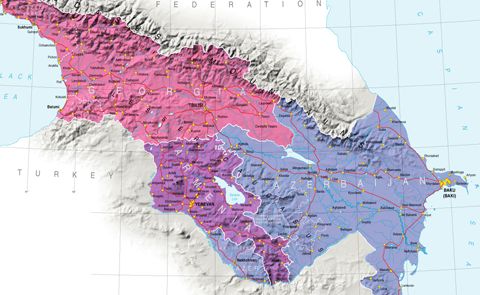
From Central Asia to the Black Sea

In early June, China unveiled a new transportation corridor when a rail cargo of 230 tons of electrical appliances worth some $2,6 million arrived in the Uzbek capital of Tashkent. Though distant from the South Caucasus, the development nevertheless has a direct impact on the geopolitics of the South Caucasus energy and transport corridor.
For centuries, Central Asia has been notorious for the lack of connectivity. Highways, railroads and pipelines were solely directed northwards towards Russian heartland. Geography also constrained the development of alternatives, but the problem is that other routes were also purposefully neglected during the Soviet times. Therefore, nowadays breaking these geographical boundaries equals to decreasing Russian influence in Central Asia.
Indeed, over the past 30 years, crucial changes have taken place where newly developed east-west transport links (from China to Central Asia, then South Caucasus) allow the region to be more integrated with the outside world. The primary motivator for this is China. The country strives to involve itself into the region’s economics and politics and, specifically, build ties with arguably the region’s most important geopolitical player – Uzbekistan. Beijing has already taken several important steps. For instance, China has become Uzbekistan’s top economic partner through growing trade and direct investment. Take the most recent example, Beijing-backed Asian Infrastructure Investment Bank (AIIB) will lend $100 million to Uzbekistan to help deal with the coronavirus pandemic and future public health disasters.
The new China-Uzbekistan corridor is some 295 km shorter and cuts five days off the standard 15 days-corridor which goes through Kazakhstan and Russia to reach Europe. As different forecasts indicate, the Kazakhstan-Russia corridor could lose some 10-15% of Chinese freight per year to the new China-Uzbekistan route – a significant number considering the massive amount of goods that move between between Europe and China.
What is crucial here is that the only viable route to ship freight to Europe from Uzbekistan is across the Caspian to Azerbaijan, Georgia and the Black Sea. Another possibility would be sending goods via the Turkmenistan and Afghanistan, then Iran and Turkey. However general insecurity along this route makes the Caspian option more promising.
These infrastructure changes in distant Central Asia as well as steady growth of shipments from China will further boost the fragile South Caucasus transport and energy corridor, which struggles to compete with enormous trade routes which go through Russia and elsewhere.
What makes the Caspian routes more interesting is the progress made in port development in Azerbaijan and Georgia. The ports of Baku and a small city of Alat have notably improved their infrastructure over the past several years. Located to the south of Baku, Alat is particularly promising as an estimated transshipment of the new port complex is potentially up to 25 million tons of cargo and 1 million TEU per year.
Similar trends of improving infrastructure take place along the rest of the South Caucasus corridor. In March, the Georgian government granted the APM Terminals a permit to start the expansion of Potin port. Essentially the project, which will add more than 1000 local jobs, involves the construction of a separate new deep-water multifunctional port (officially still a part of Poti port).
The project consists of two major phases: first stage of $250 million will take nearly 2-2,5 years to complete and will involve the development of a 1 700-meter-long breakwater and a quay with a depth of 13.5 meters. A 400-meter-long multifunctional quay for processing dry bulk cargo and further 150 000 TEUs will be added; the second stage envisages a 300-meter-long container quay. If all goes as planned, 1 million TEU yearly container capacity could be expected. What is more important for the infrastructure of the eastern Black Sea region and the geopolitics of transcontinental transshipment, the expanded Poti port would have the capacity to receive Panamax vessels.
Expansion of Poti will have regional implications. The port already enjoys the role of the largest gateway in the country and a major outlet for Azerbaijan’s and Armenia’s trade with Europe. For instance, liquids, passenger ferries, dry bulk and container traffic go through Poti. Moreover, Poti port also serves as an alternative route for exporting wheat from Central Asia to the Black Sea and elsewhere.
As the work on the Poti expansion speeds up similar developments are taking place in Batumi. In 2019 Wondernet Express, Trammo and the government of Georgia announced plans to build a new terminal with total investment cap of 17,5 million euros. More importantly, the new facility will store up to 60 000 tons of mineral fertilizers coming from Central Asia through Azerbaijan.
From a wider geopolitical perspective, both port expansions enjoy US government support as American business interests are deeply intertwined. PACE terminals, a company which operates in the port of Poti for almost 30 years, is partially owned by a US-based company. This connection raises a possible longer-term vision of Poti’s and Batumi’s development as gateways not only for Georgia, but generally for the South Caucasus and Central Asia.
Overall, these connectivity trends will reinvigorate Trans-Caspian shipping. Moreover, though considered by many as unrealistic, the dormant Trans-Caspian Pipeline (TCP), could gain traction. There is more to the story. I have mentioned the US support for the Georgian ports. Europe and Turkey share an identical position. All parties are interested in breaking Russia’s grip on gas export routes from Central Asia. Support for the east-west corridor across the South Caucasus has been present since the break-up of the Soviet Union, but rarely there have been such promising trends as there are now: steadily increasing China-Europe shipping; Chinese Belt and Road Initiative’s expansion into Central Asia; gradually improving rail-road and ports infrastructure in Georgia and Azerbaijan.
On a negative side, much still remains to be done. For instance, in Kyrgyzstan, through which the new China-Uzbekistan route goes, Chinese cargo has to be shipped by road which complicates shipment operations. Nearly the entire 400 km of the Kyrgyz section of the railway still needs to be built. So far, no solution is in sight as difficult mountainous landscape and Russian opposition complicate the issue. But the overall picture, nevertheless, is clear. Central Asia is gradually opening up, shipment across the Caspian increases and the expansion of the Georgian ports takes place creating a line of connectivity.
Emil Avdaliani specializes on former Soviet space and wider Eurasia with particular focus on South Caucasus and Russia's internal and foreign policy, relations with China, the EU and the US. He can be reached at emilavdaliani@yahoo.com.
See Also


From Neorealism to Neoliberalism: Armenia’s Strategic Pivot in Foreign Policy After the Nagorno-Karabakh Conflict

Georgia and Russia: New Turn in Bilateral Relations

3+3 Initiative as a New Order in the South Caucasus

Economic Cooperation Between Armenia and Georgia: Potential and Challenges Ahead

